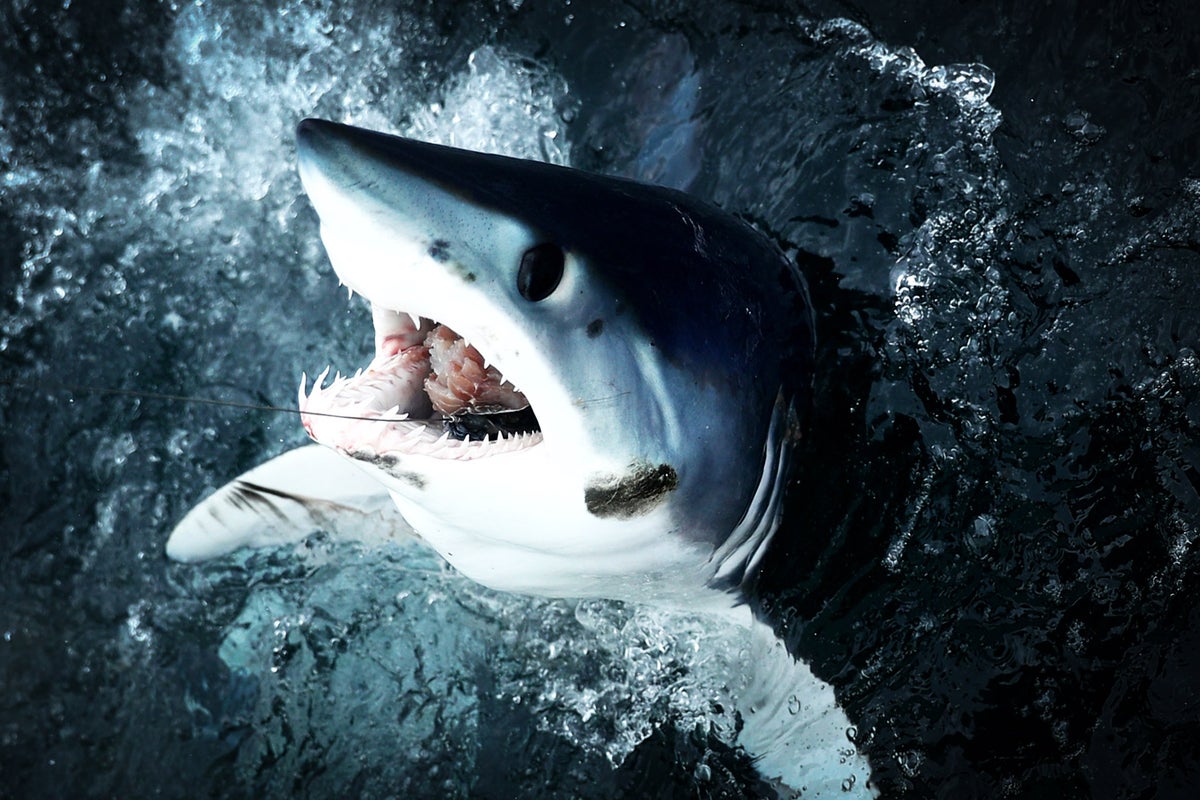
Support truly
independent journalism
Scientists have documented the world’s first known case of a shark eaten by a larger predator in the open sea southwest of Bermuda.
In one of the incidents, a reproductive female porbeagle shark native to the Atlantic not only lost her life, but also of all her developing pups.
The findings, reported on Tuesday in the journal Frontiers in Marine Science, if verified and found to be true, could hold significance for the conservation of both species which are considered endangered by the UN, researchers say.
“The predation of one of our pregnant porbeagles was an unexpected discovery,” study co-author Brooke Anderson said.
Porbeagle sharks live in the Atlantic and the South Pacific oceans, as well as the Mediterranean, growing into powerful beasts measuring around 4m long and weighing up to 230kg.
Even though they are known to live up to 30 or even 65 years, females of the species do not reproduce until they are about 13 years old.
Females give birth to an average of only about four pups every year or two after a gestation period between eight and nine months.
Due to a slow reproductive cycle, these shark populations do not recover quickly from ongoing levels of fishing or habitat loss.
To study this vulnerable species, scientists captured and released porbeagles off Cape Cod in Massachusetts in 2020 and 2022 after mounting them with satellite tags.
These tags sent the current location to satellites whenever their fin rose above the surface.
One of the tagged sharks was a pregnant female porbeagle measuring about 2.2m long.
Researchers hoped to track the female and obtain her tag data to identify important habitats for porbeagle mothers and their newborns.
But to their dismay, the female shark’s satellite tag started to transmit off Bermuda five months after its release, implying that it had popped off.
Data retrieved by scientists suggested that during those five months the shark had been swimming at a depth of about 100-200m at night and 600-800m during the day, confirming she was swimming underwater most of the time.
But suddenly from 24 March 2021 onwards for about four days, the shark seems to have been constantly at a depth between 150 and 600m.
“Only one explanation was possible: that day, the unfortunate porbeagle had been hunted and eaten by a larger predator,” scientists said.
Within this vicinity, researchers say only two predator candidates – both sharks – are large enough to prey on mature porbeagles: the great white shark and shortfin mako.
They suspect the great white shark is more likely the culprit as the shortfin mako dives to deeper depths during the day.
“We often think of large sharks as being apex predators. But with technological advancements, we have started to discover that large predator interactions could be even more complex than previously thought,” Dr Anderson said.
“We need to continue studying predator interactions, to estimate how often large sharks hunt each other,” he added.







